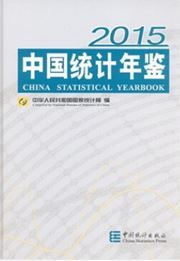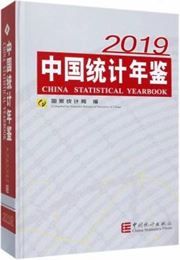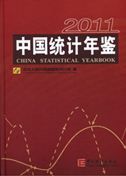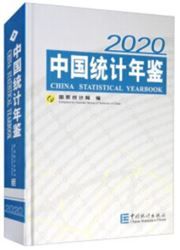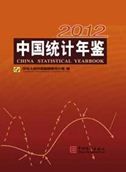China Statistical Yearbook 2015
中国统计年鉴 2015
Publisher:
China Statistics Press
Publication:
9/2015
Languages:
English, Chinese
Binding:
Hardcover
ISBN/SKU:
9787503776380
Pages:
975
Sizes:
305 x 215mm
Weight:
2.7000
On OrderTo be dispatched within 4 weeks
Special Price
£136.80
£136.80
Regular Price
£144.95
(€153.22)
China Statistical Yearbook 2015 is an annual statistical publication, which reflects comprehensively the economic and social development of China. It covers data for 2014 and key statistical data in recent years and some historically important years at the national level and the local levels of province, autonomous region and municipality directly under the Central Government.
The Yearbook contains twenty-seven chapters : l. General Survey; 2. Population; 3. National Accounts; 4. Employment and Wages; 5. Prices; 6. People’s Living Conditions; 7. Government Finance; 8. Resources and Environment; 9. Energy; 10. Investment in Fixed Assets; 11. Foreign Trade and Economic Cooperation; 12. Agriculture; 13. Industry; 14. Construction; 15. Real Estate; 16. Wholesale and Retail Trades; 17. Hotels, Catering Services and Tourism; 18. Transport, Postal and Telecommunication Services, and Software Industry; 19. Financial Intermediation; 20. Science and Technology; 21. Education; 22. Public Health and Social Services; 23. Culture and Sports; 24. Public Management, Social Security and Social Organizations; 25. Urban, Rural and Regional Development; 26. Main Social and Economic Indicators of Hong Kong Special Administrative Region (SAR); 27. Main Social and Economic Indicators of Macao Special Administrative Region (SAR). Two chapters listed as Appendices are Main Social and Economic Indicators of Taiwan Province and Main Social and Economic Indicators of Other Countries/Regions.
To facilitate readers, the Brief Introduction at the beginning of each chapter provides a summary of the main contents of the chapter, data sources, statistical scope, statistical methods and historical changes. At the end of each chapter, Explanatory Notes on Main Statistical Indicators are included.
The national data in this book do not include those of the Hong Kong Special Administrative Region, the Macao Special Administrative Region and Taiwan Province, except for the divisions of administrative areas, the area of the national territory and forest resources and otherwise specified. In accordance with the principles set down in the Basic Law of Hong Kong Special Administrative Region, and the Basic Law of Macao Special Administrative Region, statistically Hong Kong, Macao and the mainland of China are three mutually independent regions, each following its own and different statistical systems and legal provisions in conducting statistical operations independently. Statistics on the Hong Kong Special Administrative Region and the Macao Special Administrative Region as included in this yearbook are provided by the Census and Statistics Department of the Government of Hong Kong Special Administrative Region and the Statistics and Census Service of the Government of Macao Special Administrative Region respectively; and are edited by the National Bureau of Statistics.
General Survey
Brief Introduction
1-1 Divisions of Administrative Areas in China (End of 2014)
1-2 Principal Aggregate Indicators on National Economic and Social Development and Growth Rates
1-3 Composition Indicators on National Economic and Social Development
1-4 Indicators on National Economic and Social Development
1-5 Number of Legal Entities by Sector
1-6 Number of Legal Entities by Three Strata of Industry and Type of Institutions and Region (2014)
1-7 Numbers of Corporate Enterprises by Region and the Status of Holdings (2014)
1-8 Number of Business Entities by Region and Status of Registration (2014)
Explanatory Notes on Main Statistical Indicators
Population
Brief Introduction
2-1 Population and Its Composition
2-2 Birth Rate, Death Rate and Natural Growth Rate of Population
2-3 Floating Population
2-4 Age Composition and Dependency Ratio of Population
2-5 Population at Year-end by Region
2-6 Proportion of Urban Population at Year-end by Region
2-7 Total Population by Urban and Rural Residence and Birth Rate, Death Rate, Natural Growth Rate by Region (2014)
2-8 Population by Age and Sex (2014)
2-9 Household, Population, Sex Ratio and Household Size by Region (2014)
2-10 Population by Sex, Household Registration Status and Region (2014)
2-11 Age Composition and Dependency Ratio of Population by Region (2014)
2-12 Population by Sex, Marital Status and Region (2014)
2-13 Population by Sex, Educational Attainment and Region (2014)
2-14 Illiterate Population Aged 15 and Over by Sex and Region (2014)
2-15 Family Households by Size and Region (2014)
2-16 Age-specific Fertility Rate of Childbearing Women by Age of Mother and Birth Order (2013.11.1-2014.10.31)
Explanatory Notes on Main Statistical Indicators
National Accounts
Brief Introduction
3-1 Gross Domestic Product
3-2 Composition of Gross Domestic Product
3-3 Gross Domestic Product at Constant Prices
3-4 Indices of Gross Domestic Product
3-5 Indices of Gross Domestic Product
3-6 Value-added by Sector
3-7 Share of the Contributions of the Three Strata of Industry and Main Sectors to the Increase of the GDP
3-8 Contribution of the Three Strata of Industry and Main Sectors to GDP Growth
3-9 Gross Regional Product and Indices
3-10 Per Capita Gross Regional Product and Indices
3-11 Gross Regional Product by Three Strata of Industry (2014)
3-12 Income Approach Components of Gross Regional Product (2014)
3-13 Gross Domestic Product by Expenditure Approach
3-14 Components of Gross Domestic Product by Expenditure Approach
3-15 Gross Regional Product by Expenditure Approach (2014)
3-16 Gross Capital Formation and Its Composition by Region (2014)
3-17 Final Consumption Expenditure and Its Composition by Region (2014)
3-18 Household Consumption Expenditure
3-19 Contribution Share and Contribution of the Three Components of GDP to the Growth of GDP
3-20 Household Consumption Expenditure by Region (2014)
3-21 Intermediate Use Part of 2012 Input-Output Table
3-22 Final Use Part of 2012 Input-Output Table
3-23 Direct Input Coefficients of Input-Output Table (2012)
3-24 Total Input Coefficients of Input-Output Table (2012)
3-25 Income and Proportions from Primary Distribution of Business, Government and Household Sectors
3-26 Disposable Income of Corporations, Governments and Resident and Proportions
3-27 Flow of Funds Accounts (Physical Transaction, 2013)
3-28 Flow of Funds Accounts (Financial Transaction, 2013)
3-29 Balance of Payments (2014)
Explanatory Notes on Main Statistical Indicators
Employment and Wages
……
《中国统计年鉴2015》系统收录了全国和各省、自治区、直辖市2014年经济、社会各方面的统计数据,以及多个重要历史年份和近年全国主要统计数据,是一部全面反映中华人民共和国经济和社会发展情况的资料性年刊。《中国统计年鉴2015》本年鉴正文内容分为27个篇章,同时附录两个篇章。为方便读者使用,各篇章前设有《简要说明》,对本篇章的主要内容、资料来源、统计范围、统计方法以及历史变动情况予以简要概述,篇末附有《主要统计指标解释》。《中国统计年鉴2015》所涉及的全国性统计数据,除行政区划、土地面积和森林资源外,均未包括香港、澳门特别行政区和台湾省数据。根据中华人民共和国“香港特别行政区基本法”和“澳门特别行政区基本法”的有关原则,香港、澳门与内地是相对独立的统计区域,依据各自不同的统计制度和法律规定,独立进行统计工作,本年鉴中有关统计资料分别由香港特别行政区政府统计处、澳门特别行政区政府统计暨普查局提供,国家统计局进行编辑。《中国统计年鉴2015》本年鉴所涉及东部、中部、西部和东北地区的具体划分为:东部10省(市)包括北京、天津、河北、上海、江苏、浙江、福建、山东、广东和海南;中部6省包括山西、安徽、江西、河南、湖北和湖南;西部12省(区、市)包括内蒙古、广西、重庆、四川、贵州、云南、西藏、陕西、甘肃、青海、宁夏和新疆;东北3省包括辽宁、吉林和黑龙江。


